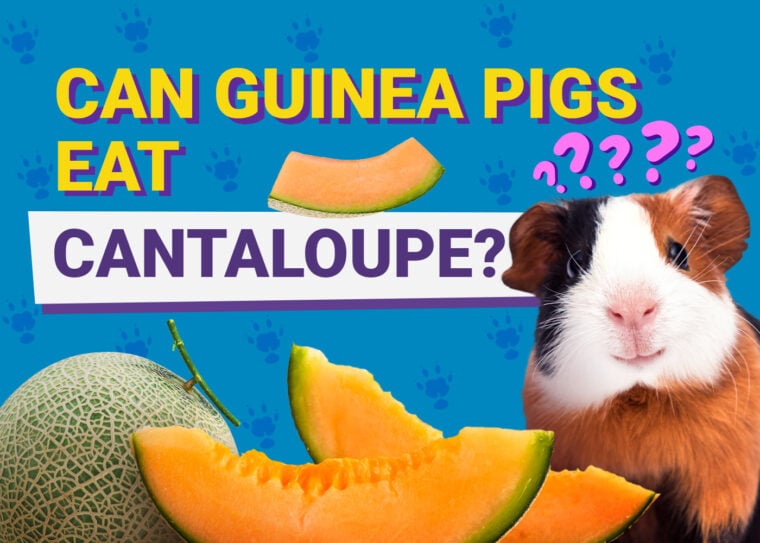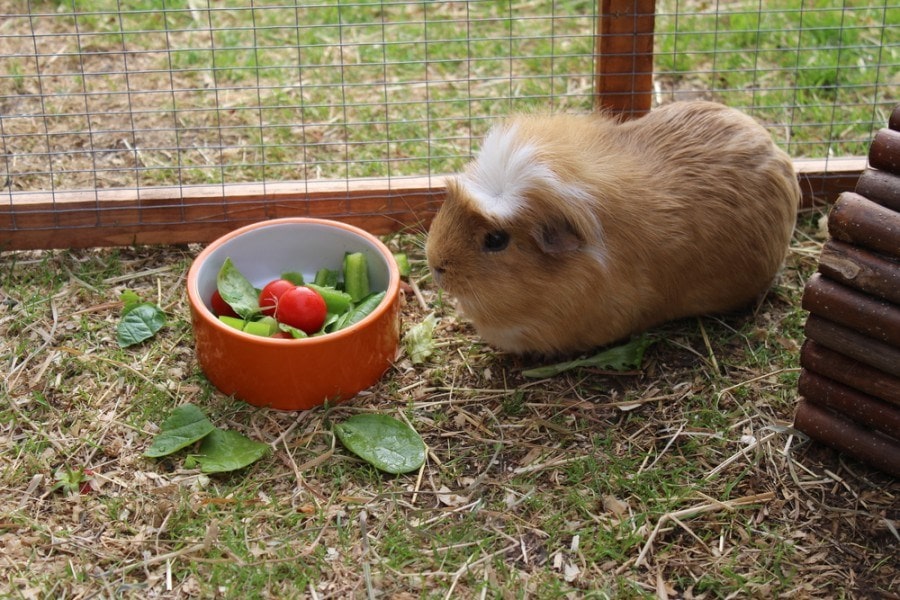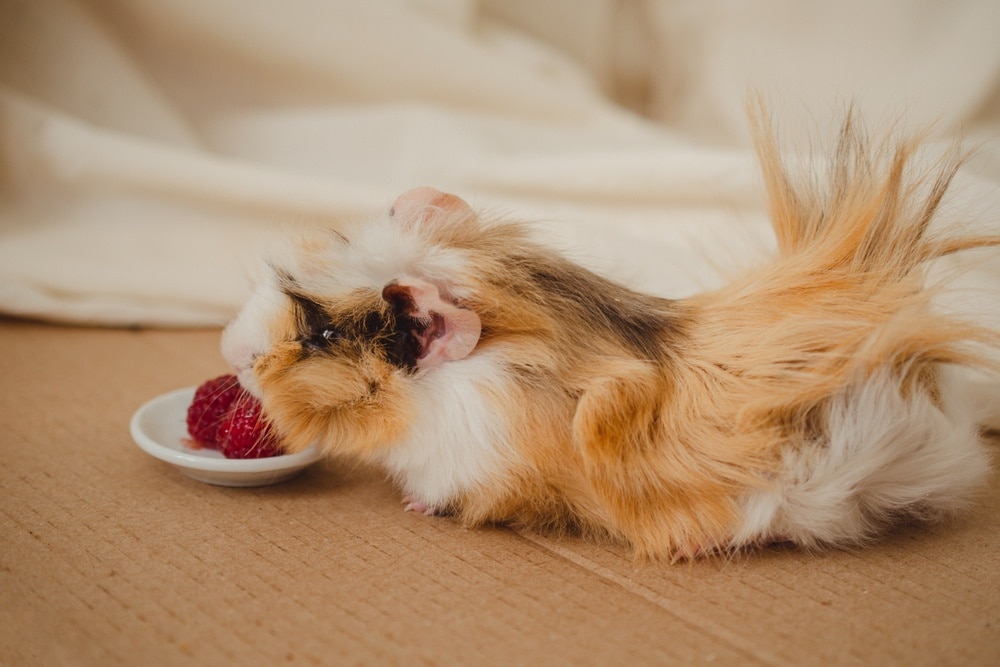
Click to Skip Ahead
Guinea pigs are popular pet rodents kept all over the world. They are probably best known for their antics which involve chewing on hay all day and looking adorable while doing so. People who own Guinea pigs are often curious if they can eat fruits and vegetables available in the house.
Cantaloupes, also known as rock melons or sweet melons, are a type of fruit. They are classified as melons and weigh anywhere from 1 to 11 pounds. If you’re curious to know whether cantaloupes are safe for your guinea pigs to consume, the answer is that while cantaloupe is non-toxic for guinea pigs to consume, it should only be given to them as a treat on an occasional basis. Read on as we explore this fruit in greater detail.
Guinea Pig Diet
Guinea pigs are herbivores that do best on a diet comprising high-quality pellets made specifically for them and an unlimited amount of good-quality hay. Examples of appropriate hay for guinea pigs include timothy, orchard, grass, and oat hay. Along with these pellets, hay should form the bulk of their diet. The hay should be offered in unlimited amounts, and guinea pigs should be offered a cup or so of pellets every day.
In addition to these two items, guinea pigs also require a daily serving of fresh leafy vegetables (also about a cup) high in vitamin C. Examples of such vegetables include red bell peppers and parsley. Lastly, guinea pigs should always have access to fresh clean drinking water.
Fruits such as cantaloupe and some grains can be offered to guinea pigs as a treat. When given in moderation, these fruits can have some health benefits for your guinea pig; however, they should not be used permanently in their diet. Because cantaloupes are fruit, you should consider them an occasional treat for your guinea pig and not something you feed them on a daily basis.

Cantaloupe Nutritional Analysis
Like most fruits, the biggest advantage of offering your guinea pig some cantaloupe is the fact that they contain vitamin C. Just like humans, guinea pigs are unable to make their own vitamin C and therefore need to have their diet supplemented with this vitamin. Many guinea pig pellets are fortified with vitamin C. However, this form of vitamin C can easily degrade and does not have a very long shelf life (even if the pellet itself is not expired).
The vitamin C in cantaloupe is indeed spectacular for a fruit, and cantaloupe easily ranks as one of the best fruits when it comes to the amount of vitamin C it offers. However, like most fruits, there’s a catch.
Many fruits are high in vitamin C however should only be offered to your guinea pig in moderation and as a treat (no more than 5–10% of their intake for the day) because of the following reasons:

Cantaloupe Feeding Guide
As with most fruits, cantaloupe should be offered to your guinea pig sparingly. Because the skin of the fruit might be covered with herbicides, pesticides, or other chemicals or contaminants, it’s best to not offer it to your guinea pig. Instead, it’s best to peel the melon and cut out a 1-inch cube for your guinea pig (without the seeds). A serving of this size, offered once or twice a week at most, should be sufficient for your guinea pig.
A Note About Preference
Guinea pigs can be picky eaters at times, and therefore, you might find that your guinea pig may not accept cantaloupe readily. If this is the case, you might want to try other fruits instead.
Examples of fruits that are safe for guinea pigs to consume (in moderation, of course) include:

Conclusion
Like many fruits, cantaloupe is safe for guinea pigs to consume when offered in moderation, without its skin and seeds. A serving of an inch-sized cube once or twice a week will definitely spruce up your guinea pig’s culinary experience. However, if you find that your guinea pig isn’t readily accepting of cantaloupe, rest assured that there are other alternatives you can offer your guinea pig instead. As always, if you ever find yourself in doubt about what to feed your guinea pig, you should consult with your veterinarian.
You may also want to read:
- 9 Best Online Reptiles Stores of 2023 (& What You Need to Know)
- 20 Fascinating & Fun Snake Facts You Never Knew








